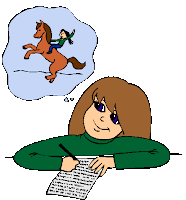In a teacher training focused on teaching children how to comprehend, an exasperated first grade teacher said to me, “I know visualizing is an important strategy to teach but my students just don’t get what I mean by it!”
As she spoke these words, I had a flashback to a third grade reader I met last year who, after listening to me harangue on and on about seeing pictures when you read, looked at me quizzically and asked, “Yeah, but how do you do that, see pictures in your mind?”
And then fast forward to the afternoon when I gathered another group of teachers to read “Beautiful and Cruel” from Sandra Cisnero’s House on Mango Street in an effort to reflect on their own meaning making processes. As we shared what we did as readers to make this piece make sense, one teacher declared that as she read, she visualized. When she said this, I thought about the frustrated first grade teacher and the confused third grader and seized the opportunity to do some research so I asked her, “What do you see?”
When I asked her this question, I caught her off guard. She realized that this process was really automatic for her and while the image of a teenage girl was etched in her mind, she couldn’t speak with great detail about the picture that she saw.
This stopped me in my tracks. Visualization is one of those strategies that everybody knows. When I talk to kids (and adults) about the habits and practices of good readers, everybody notes “making movies in their minds” as something that they do when they read but what I am beginning to realize is that while it may be widely known and talked about, perhaps, in practice, it’s not as easy as we think to do.
When I talk to students about visualizing, very often what I will do is have them close their eyes and imagine. I model by giving them a detailed verbal description about what I see when the words wash over me. After reading a text like “Beautiful and Cruel” I will talk about a girl with jet black, frizzy hair that hangs below her shoulders and looks wild and untamed. I describe her nose as wide and her eyes as deep brown, set closely together. I tell them how I see in my picture a girl who is slightly overweight and she wears her shorts too short and her top too tight.
Did you catch that?
When I teach visualizing, I tell them what I see.
Perhaps herein lies the problem. I am using sound, or the sense of hearing, to convey the sense of sight. No wonder so much is lost in translation! I am thinking that if “picture” and “movie” are the metaphors that extend our understanding of visualization, then what might work better in my mini lessons are sketches or Google images that I might flash up on a screen to serve as a backdrop to those verbal descriptions that I share with students to help them see what it means “to see” when you read.

